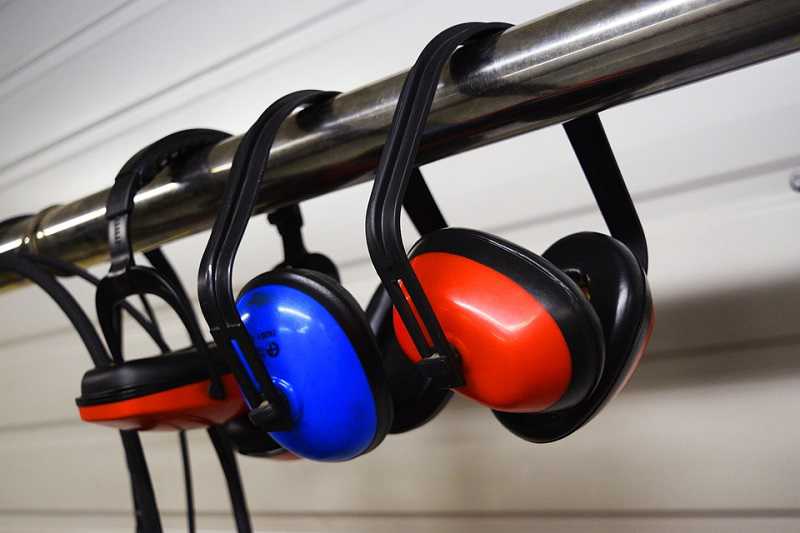As an Amazon Associate we earn from qualifying purchases.
To help us choose the hearing protection that’s right for our needs, a variety of simplified numeric attenuation ratings have been created.
These ratings tell the buyer roughly how many decibels a noise will be reduced by when heard through the hearing protection (ear plugs or ear defenders).
The two most common of these attenuation ratings are SNR and NRR. Both are denoted by a number of decibels (dB). In essence, the higher the number is, the more protection the product provides.
Here’s an overview of what each rating means and how they are different.
SNR (Single Number Rating)
The Single Number Rating, or SNR for short, is the EU’s standard for showing the attenuation of hearing protection.
SNR is used more frequently in the UK, though you’ll often see an NNR number instead on products imported from the US.
The SNR gives a rough estimate of the noise reduction offered by hearing protection products in decibels. For example, an SNR of 20 corresponds to roughly a 20 decibel reduction in the noise that you hear.
The most obvious difference between SNR and NNR ratings is that SNR ratings tend to be a few decibels higher.
An exact formula for converting NNR to SNR doesn’t exist, but SNR ratings tend to be about 3 dB higher, so a product with an NNR of 30 will have an SNR of about 33.
This is because the two ratings are determined by following different testing procedures.
The SNR is often paired with another attenuation rating: the HML rating.
The HML system attempts to give the user an idea of the attenuation provided by hearing protection at different frequencies: high, medium, and low.
This allows the wearer to pick hearing protection when the noise environment is mostly dangerous at a specific area on the frequency spectrum.
Unfortunately, SNR still gives a slightly inaccurate representation of the real-world performance of a given product. If the hearing protection is loosely fitting, the noise reduction won’t be so effective.
Most experts recommend ‘derating’ both SNR and NNR numbers to get a more accurate figure for noise reduction in real world conditions.
The UK government’s Health and Safety Executive (HSE) recommends applying a derating of 4 dB to the SNR number (source). This means that ear defenders with an SNR of 30 would be expected to provide a noise reduction of 26 decibels in the real world.
NRR (Noise Reduction Rating)
NRR is the noise reduction standard used in the United States.
Like the SNR, it’s intended to give the amount of noise reduction offered by hearing protection products in decibels. Therefore, a pair of ear defenders with an NRR of 30 dB should reduce noise by 30 dB in ideal conditions.
The NRR is determined through a series of tests that are conducted by the manufacturer instead of an independent testing laboratory.
The testing procedure is sometimes very clinical, ensuring that test subjects have their hearing protection fitted properly.
This often means that the test results overstate the real-world performance of the hearing protection.
For this reason, it is common to apply a ‘derating’ to achieve a more accurate measure. You can do this by subtracting the result of applying this formula:
(NRR number – 7 ) / 2
For example, if the NRR number is 30 then the derating will be:
(30 – 7) / 2 = 11.5
So the estimated actual noise reduction in decibels will be 30 – 11.5 = 18.5.
You can usually increase the NRR by combining ear defenders with ear plugs.
Combining ear defenders with ear plugs
Cooper Safety give an explanation of the effect of combining ear defenders with ear plugs on the total NRR here.
They explain that instead of adding the two NRR ratings together, you add 5 dB to the item with the higher NRR.
So if you have some ear defenders with an NRR of 27 dB and some ear plugs with an NRR of 30 dB, they would have an NRR of 35 dB when combined together.
Summary
Put simply, SNR and NRR are two standards for measuring the attenuation of a hearing protection product.
SNR is the EU standard, while NRR is the US standard.
The testing procedure is slightly different between them and the calculations involved are different.
Both ratings are designed to give a good estimate of real-world noise reduction in decibels when the hearing protection is fitted properly in most real-world noise environments.
Since they are both designed to reduce the complexities of noise attenuation to a single number, actual performance will differ depending on a variety of factors.
It’s important to consider the noise environment that the protection will be used in, and how well the hearing protection product is fitted.
Amazon and the Amazon logo are trademarks of Amazon.com, Inc, or its affiliates.

